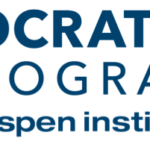 Teach to Work has had the pleasure of partnering with the Buck Institute for Education’s PBLWorks to bring to our readers a deeper understanding of Project Based Learning. Between an extensive interview with leadership, as well as offering a new online course on developing, implementing, and assessing project assignments (now available through our website www.teachtowork.com), our hope is to bring you a new focus and ability for assigning student-lead projects.
Teach to Work has had the pleasure of partnering with the Buck Institute for Education’s PBLWorks to bring to our readers a deeper understanding of Project Based Learning. Between an extensive interview with leadership, as well as offering a new online course on developing, implementing, and assessing project assignments (now available through our website www.teachtowork.com), our hope is to bring you a new focus and ability for assigning student-lead projects.
Who is PBLWorks? They are a national nonprofit with an exclusive focus on Project Based Learning among K-12 educators. PBLWorks believes that project-based learning advances educational equity and empowers youth in skills development and self-directed transformational learning, while increasing student motivation with real-world applications. Their core precepts cross over to student project assignments—I believe, for secondary educators as well.
I’ve wanted to present this information, particularly for our Project Based Mentoring® schools, because the better the project—the better the assignment—the better the mentor relationship, and the greater success for student achievement. Better all the way around.
I interviewed the PBLWorks senior team, including CEO Bob Lenz and Chief Impact Officer Sally Kingston, PhD. I’m excited to share their insights including special links that illustrate fantastic projects utilized in the classroom, such as “The Tiny House Project,” and “The Flint Michigan Water Debacle.” How were these projects developed, assigned, and implemented—and how did the experience affect the student population? Please keep reading!
Patty:
When you are looking back in retrospect on a project assignment, how do you measure its success? What do you look for as indicators of a great project?
PBL Team:
We look at several things, but some of the top include the quality of work product, the quality of the students’ presence, and how well the students managed their time and effort. And of course, the icing on the cake is when we see them have fun, because we know that leads to long-term learning and impact.
Patty:
What would you say are the gold standard criteria for selecting and assigning Projects from PBL Works?
PBL Team:
We have seven standards that we consider essential to project design. These are a slight variation of those embraced by High Quality Project Based Learning. Our seven standards are:
- The intellectual challenge or question
- How sustained the inquiry is
- Authenticity
- Student voice and choice
- Reflection
- Critique and revision
- Public product
Patty:
What are the advantages of teaching with project based learning?
PBL Team:
First and foremost, the student is at the center of their own learning. This drives engagement and retention. Project-based learning is also rich, deep, and exciting. And last but not least, it is relevant. A student is sitting at the center of the learning experience, rather than reading about someone else’s. It’s a game changer, and it is transformational. And transformational experiences are what change lives.
What drives the experience is working on something hard that *you might* feel like you can’t achieve, but with adults encouraging you, (and mentors) you realize that you can. That’s what makes project based learning so powerful.
Two brothers from Stanford’s Graduate School of Business, Chip and Dan Heath, have performed studies and written extensively about learning. They have found that traditional education is a flat line – a non-event. But when students play sports or are in a performance, there is real learning. They are pushed harder, challenged, and they learn more about themselves.
Patty:
How are educators responding to project based learning?
PBL Team:
Across the board, we are experiencing a coalition of the willing. Educators are getting excited, especially when they see the kids in action.
As you’ve undoubtedly heard, COVID has prompted a lot of teachers to transition out of teaching – especially at the leadership level. But we are seeing an increase in demand for PBL, and the obstacles of COVID have had little impact. We’ve also seen a transition from the traditional mindsets with the change of leadership.
For example, Hawaii has been adding schools and educators who teach with PBL for four years now. Massachusetts has a third cohort that will be trained by PBLWorks. New York is launching a program, and Kentucky has instituted it in multiple school districts.
Patty:
How does PBL integrate with traditional education?
PBL Team:
In most cases, PBL is integrated directly into the regular classrooms, starting as early as 1st grade. We are seeing at least two projects a year, so by the time a student graduates from high school, they could very well have more than 24 projects under their belt.
Patty:
How do PBL students test in comparison to traditional students who are not exposed to PBL?
PBL Team:
Actually, we’ve seen remarkable results – particularly for PBL students of government studies and environmental sciences. Lucas Education Research did a random control test and found that a PBL student experienced a 9% point increase on the average. We are also seeing a growth in physics and geography classes too. On AP exams, PBL students averaged an 8% better score.
Patty:
Let’s talk about some examples. Tell me about your “Tiny House” project.
PBL Team:
The “Tiny House Project,” as it has become known, was introduced to third graders at Katherine Smith Elementary School in San Jose, California. We worked with the principal, Kevin Armstrong, and third-grade teacher Cheryl Bautista to showcase how a PBL project could transform the experience for a special needs class, with the help of experts and community helpers.
At the heart of the project, every student was asked to interview a client (that was provided by the teacher) and find out what the client wanted in their tiny house. The students were then tasked with designing a tiny house based on these needs.
Experts and community helpers were brought in to educate students on blueprints, geometric concepts, and the arithmetic behind the various designs. Students also read about living in small spaces, and using a variety of materials, created 3D model renderings of the tiny houses.
The final step involved presenting their model to their clients and reviewing and revising the model based on input.
We have a video that details much of the process on our website: https://www.pblworks.org/video-tiny-house-project.
The take-aways were numerous. Students learned some math skills, square footage concepts, units of measurement, problem solving, how to report on problems, and how to speak to adults and interact with experts. It was a truly exemplary experience for everyone.
PBL Team:
Another example was a group of inner-city 11th graders from Brooklyn, New York. They took on a real-world problem that Flint, Michigan experienced: the presence of lead in their drinking water.
In this PBL example, the students conducted original research and directed statistical analyses just as would be expected of scientists. They then teamed up with college students to perform controlled experiments and see what they could do to solve the lead issue.
At the conclusion of the project, the students wrote their findings for a scientific journal, following the format required for scientific journals. We reported on this project at https://my.pblworks.org/project/theres-what-my-water, and you can see the video on YouTube at: https://youtu.be/0E_GYEaq5Xg.
Patty:
Amazing. And I have no doubt these students experienced life-changing transformations as a result of these projects.
PBL Team:
Absolutely. Students learned about social capital. They learned how to gather information and apply analyses. They learned team-building skills. And they addressed a real, global problem. Not bad for a semester’s work…
Wrap-Up:
As Teach to Work grows its program with community colleges across the country, an overarching question prevails—especially with instructors unfamiliar with assigning projects as part of their class curriculum. I wrote about this extensively in Chapter 4 of Teach to Work (the book). But I believe this article, the videos, and the short training offered by PBLWorks (available on our website) can be great resources.
I envision Project Based Mentoring® to be a cornerstone for workforce development, teaching under-skilled learners to become project leaders and embracing master planning, critical thinking, strategic implementation, collaboration, succinct oral and written summaries, and insightful self-assessment evaluations. To these ends, I foresee a marriage of project assignments and mentorship to be utilized in secondary education, in work force training, and with new hires in all fields. PBLWorks is making it happen at the earliest stage: K-12. How can we apply these same principles at the community college level and invite industry mentors to ensure practicality and real-world project success?
Stay tuned.


